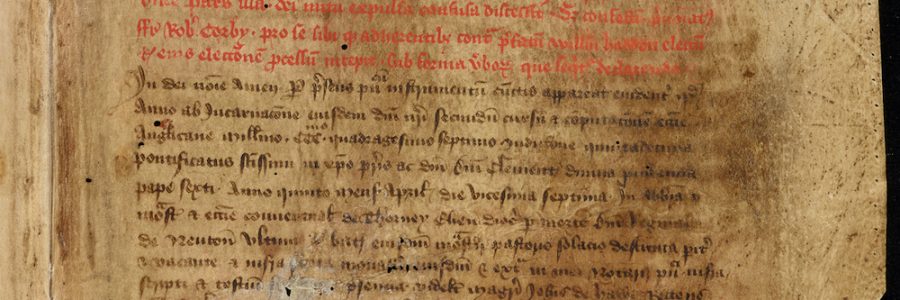
Death, scandal and a disputed election
To write of a disputed election at this moment in time may be thought to invite controversy, to tempt fate, or at least to be premature. However, we hope to maintain the Special Collections Blog’s conscientiously apolitical reputation by concerning ourselves with the events of 27 April 1347, rather than the present time – and with the election to the abbacy of the fenland abbey of Thorney, rather than some other office. (The Plague only arrived in England the following summer, so we cannot indulge in entertaining further parallels with our troubled times…).
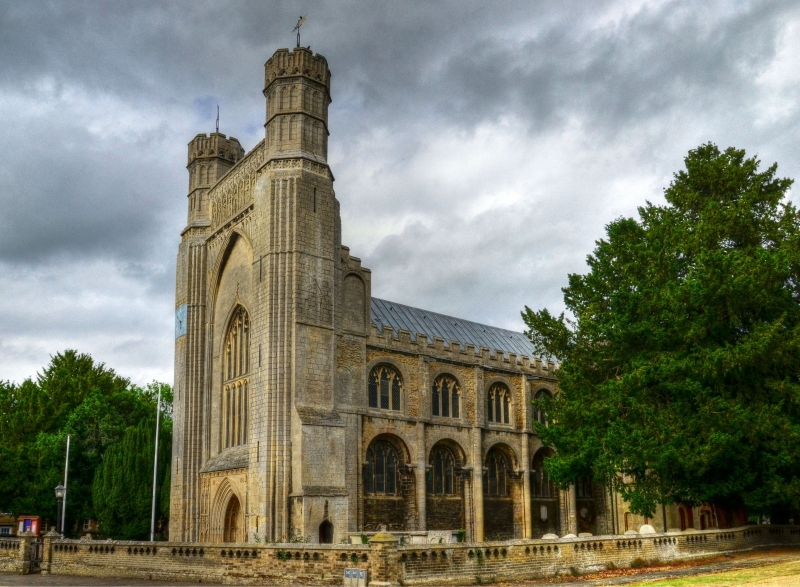
Fittingly, since there are always two sides to a story, there are two accounts of this particular controversy, both of which are preserved in manuscripts held at Cambridge University Library. The official record was written into the register of Thomas de Lisle, bishop of Ely (now EDR G/1/1, pt. 2, ff. 49r-50r). Also committed to parchment was the personal testimony of one of the candidates, Robert of Corby, senior, written into a space at the end of the first volume of the Abbey’s cartulary, known as the Red Book of Thorney (now MS Add. 3021, ff. 471v-472v).
A death and a scandal provided an appropriately dramatic backdrop to the election. The need to elect a new abbot was prompted by the death of the previous abbot, Reginald of Newton, on 16 April 1347. Two years earlier, Thorney (and other religious houses in the diocese of Ely) had been subject to a visitation by Hugh of Seton, a canon of Exeter Cathedral Prior, acting on the orders of the Archbishop of Canterbury. His findings are also recorded in the episcopal register mentioned above.
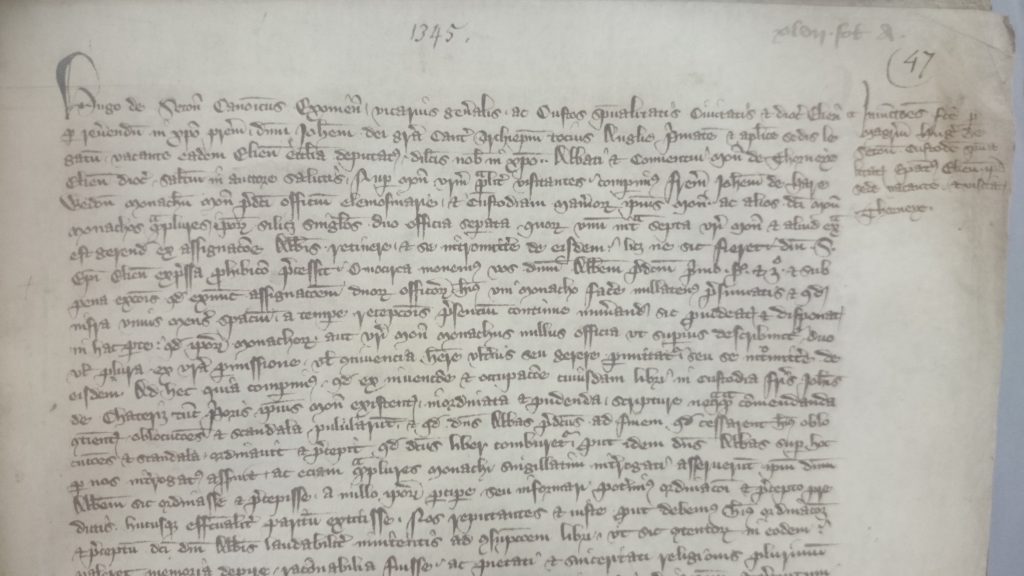
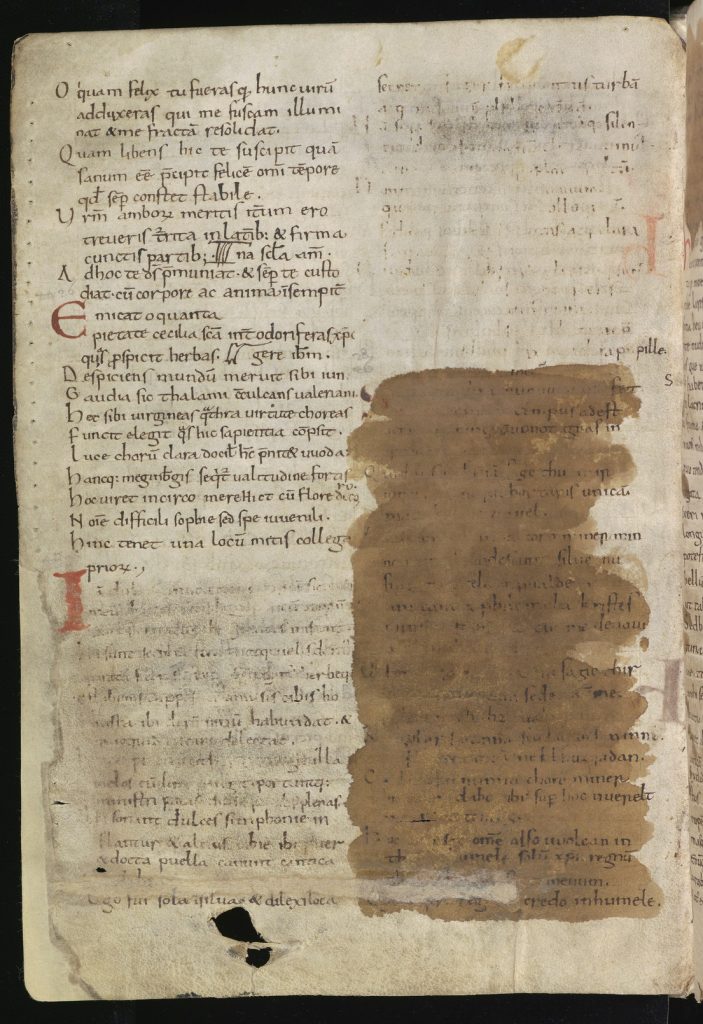
Of particular concern to Hugh was his discovery that there had been circulating ‘a book containing forbidden and shameful writings’. It had apparently been stolen from the Prior, John of Chatteris, who may himself have confiscated it from the monks. Abbot Reginald had ordered that the book be burnt, but this went unregarded, and the whereabouts of the book were still not known at the time of Hugh’s visitation. Prior John resigned from his post and Hugh threatened to excommunicate whoever had the book unless he burned it within six days, copied it or caused a copy to be made. Talking about the book was also similarly forbidden, which suggests a concern that the contents might be memorised and shared orally or committed to parchment again once things had died down.
It is not known what the book contained, nor is it known to have survived to the present day, but we have an idea of the kinds of naughty things monks liked to read from another manuscript at the University Library, MS Gg.5.35: a compilation of various poetic works, some erotic, made around the mid-11th century at the abbey of St Augustine, Canterbury. The story of the ‘scandalous book’ was picked up by Richard Sharpe in 2005 and readers wishing to learn more of monastic reading practices at Thorney are encouraged to read his excellent article on the subject.
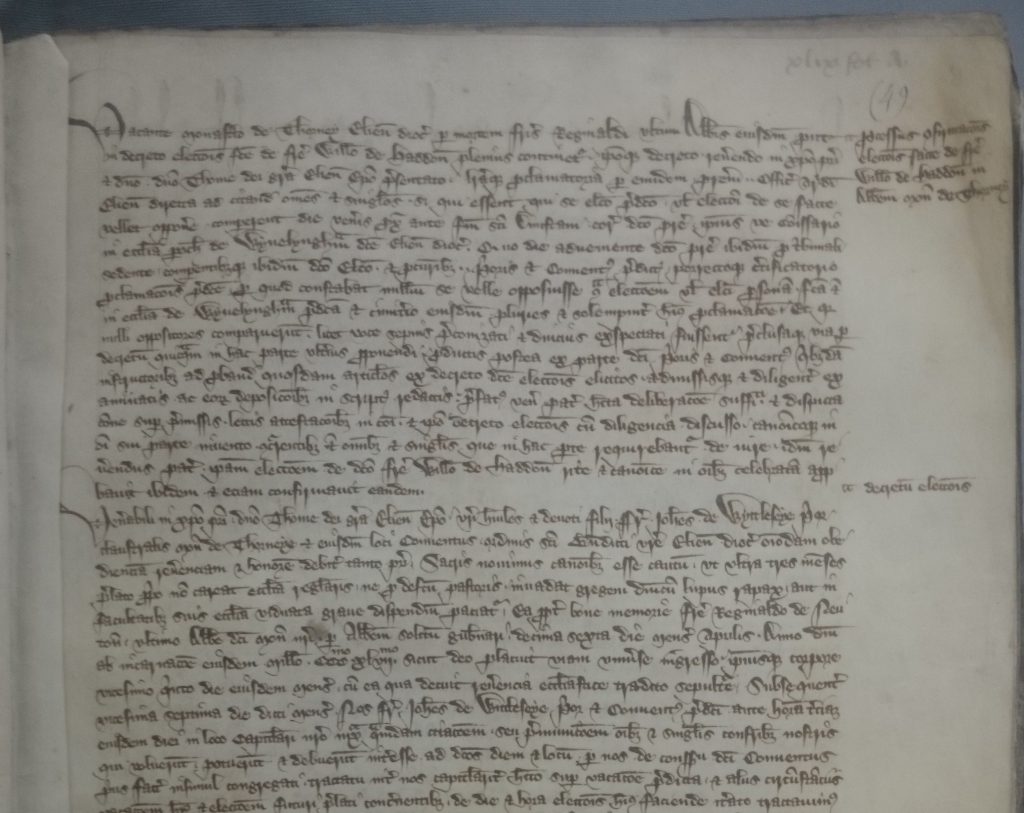
There were two candidates to succeed Reginald of Newton: William of Haddon and Robert of Corby, senior (there was also a Robert of Corby, junior, at Thorney). According to the official account, on 27 April, the new prior, John of Whittlesey, summoned the monks to the Chapter House before the hour of Tierce to deliberate the election, where ‘unanimous agreement and consensus’ was reached: William of Haddon was chosen as the new abbot. However, according to Robert of Corby, things did not go so smoothly, with the monks divided in their support between him and William. At one point, William’s party guarded the cloister doors against their opponents, prompting a formal protestation from Robert. Furthermore, in an apparent attempt to impose their choice on the rest of the community, the rival groups brought their candidates to the high altar and – in what could be described as ‘intoning past one another’ – sang the ‘Te Deum’ as if their man had been chosen. Ultimately, however, and apparently for the good of the community, Robert withdrew and William was duly elected. (Unfortunately, we have to rely on a summary of this turbulent time in the Victoria County History: the leaf on which Robert’s testimony was written has now deteriorated and the faded text is impossible to read in places).
There was a further chapter in the story of the ‘scandalous book’: a subsequent visitation in October of that year, this time by Bishop Thomas himself, found the book still in circulation. As Richard Sharpe noted, it is difficult to interpret the records, but the book appears to have resurfaced at the bed-head of John of Chatteris, who had recently been reinstated as prior. It appears to have been placed there as a practical joke, perhaps in an attempt to embarrass the man from whose possession it had originally been stolen. Investigations found that it had been placed there surreptitiously by two monks: William of Sutton and none other than Robert of Corby. Such apparent troublemaking was not enough to prevent Robert being compensated four years later for ceding the abbacy to William of Sutton: according to the Calendar of Papal Petitions, he received a pension of eight marks per year, two monks’ portions, and a fitting room or lodgings within the monastery.
After 1347’s tumultuous events – well, tumultuous by the standards of fourteenth-century monasticism – it was some time before life at Thorney returned to its normal pattern. The Black Death arrived the following year, with thirteen monks succumbing to the disease and a further hundred members of the monastery’s broader household (perhaps including its manorial tenants). By 1379, the community had bounced back, with 28 monks recorded as living there. William of Haddon survived, serving as abbot until his death on 6 November 1365. The fate of the troublesome Robert of Corby is not known.
Bibliography:
Richard Sharpe, ‘Monastic reading at Thorney Abbey’, Traditio, 60 (2005), 243-78 <https://www.jstor.org/stable/27832048>
The Heads of Religious Houses in England and Wales, vol. 2: 1216-1377, ed. by David M. Smith and Vera C.M. London (Cambridge: Cambridge University Press, 2001), pp. 75-76 <https://doi-org.ezp.lib.cam.ac.uk/10.1017/CBO9780511495632>
‘Houses of Benedictine monks: Abbey of Thorney’ in A History of the County of Cambridge and the Isle of Ely: Volume 2, ed. by L.F. Salzman (London: Victoria County History, 1948), pp. 210-217. <http://www.british-history.ac.uk/vch/cambs/vol2/pp210-217>

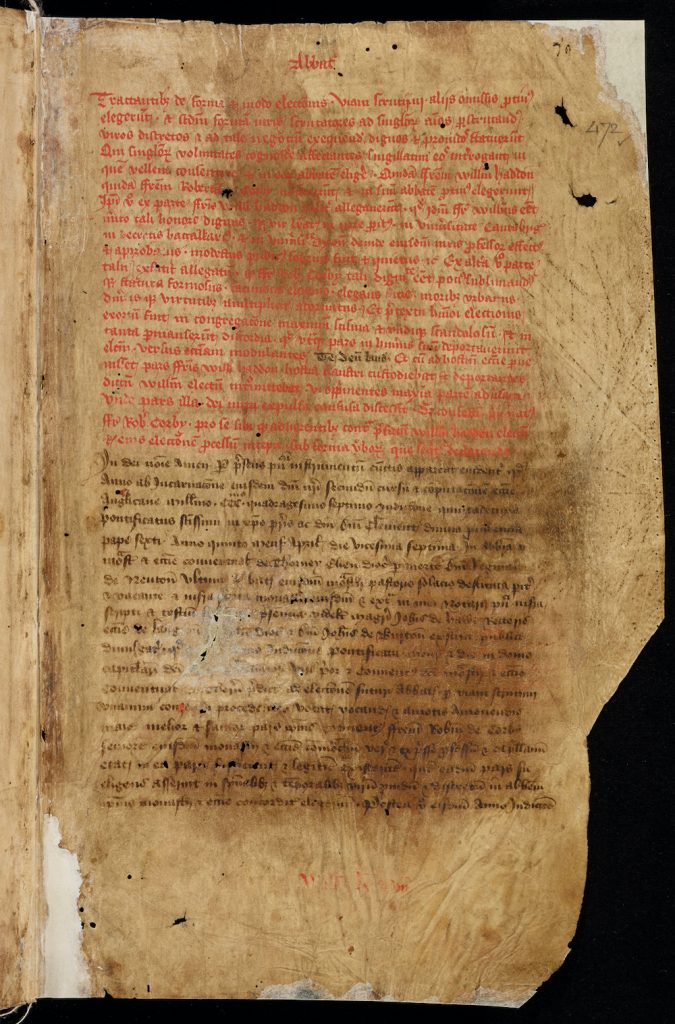
Please, who is the author of ‘Houses of Benedictine monks: Abbey of Thorney’ in A History of the County of Cambridge and the Isle of Ely: Volume 2, ed. by L.F. Salzman (London: Victoria County History, 1948), pp. 210-217. ?
Many thanks.
The authors were Dorothy M. B. Ellis and L. F. Salzman.
I appreciate the help.